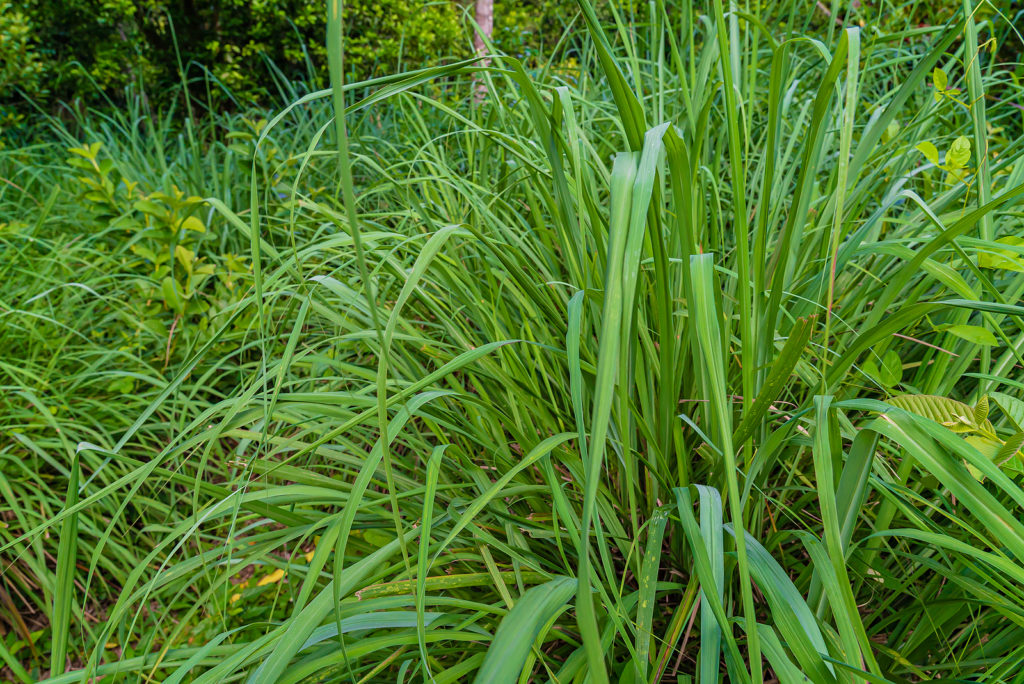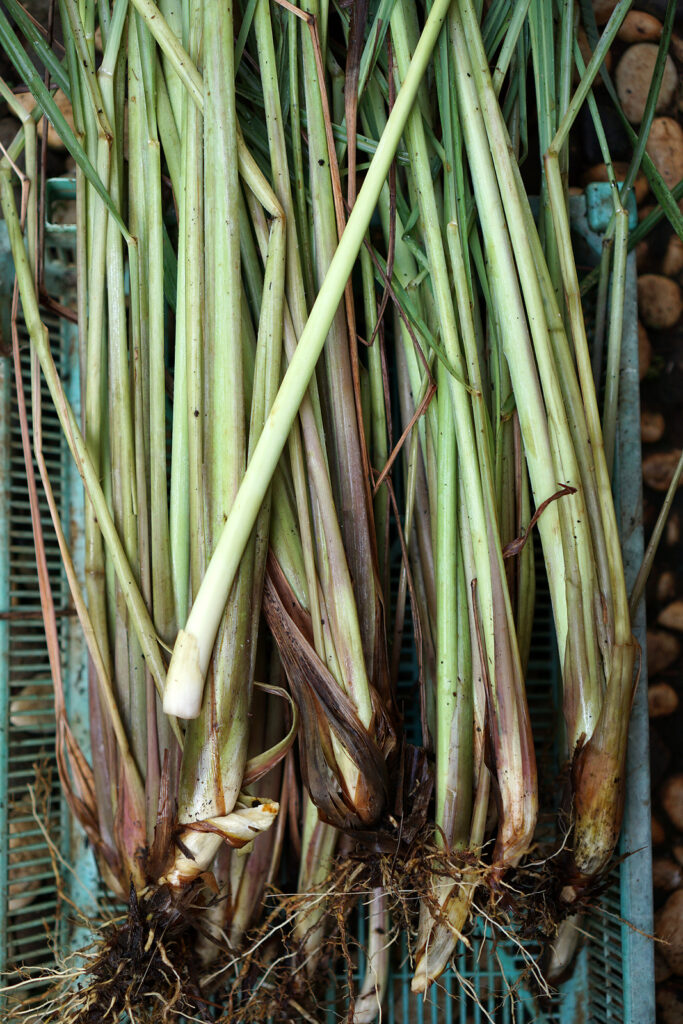Lemongrass is an aromatic grass-family herb with a rich lemon flavor and fragrance. Leaves and the bulbous stem are used as a seasoning in Southeast Asian dishes and lightly in soups. The leaves can be brewed to make a relaxing tea.
Lemongrass is a subtropical plant. The slender and arching grass-like leaves can grow to five feet tall. It is best to bring lemongrass indoors in winter in regions cooler than Zone 9.
Where to Plant Lemongrass
- Best location: Plant lemongrass in full sun.
- Soil preparation: Grow lemongrass in compost-rich, well-drained soil; however, lemongrass will grow in most garden soils. Lemongrass prefers a soil pH of 6.5 to 7.3.

When to Plant Lemongrass
- Seed starting indoors: Start seeds in spring a few weeks before the last frost. Sow seed in a 6-inch pot and move into successively larger pots as the clump grows. Use a potting mix containing one-third compost, one-third good topsoil, and one-sixth vermiculite. New plants can also be started from root divisions.
- Transplanting to the garden: Set new plants in the garden after all danger of frost has passed.
- Outdoor planting time: Sow seed or set out root divisions two weeks after the last frost in spring.
How to Plant Lemongrass
- Planting depth: Sow seed ¼ inch deep. Set root division 1 inch deep.
- Spacing: Space plants 2 to 4 feet apart.
- How much to plant: Grow 2 clumps for culinary use.
- Companion planting: Grow lemongrass with Lemon verbena and passionflower. Lemongrass has a sharp scent and will repel many insects including mosquitoes.
Watering and Feeding Lemongrass
- Watering: Keep the soil evenly moist; water regularly in dry climates.
- Feeding: Feed lemongrass with compost tea of liquid fish emulsion every 2 weeks. Cut back on feeding as winter approaches.
- Care: Fertilize lemongrass monthly during the growing season with a water-soluble fertilizer.
Container Growing Lemongrass
- Container growing: Lemongrass is easy to grow in containers. Start lemongrass in a pot 6 inches deep and wide. A mature clump can grow in a 5-gallon nursery pot. Feed container plants with liquid fish emulsion and seaweed at monthly intervals during the summer. Grow lemongrass in pots in regions cooler than Zone 9; take plants outdoors in summer and indoors in winter.
- Winter growing: Bring plants indoors in the fall.
Lemongrass Pests and Diseases
- Pests and diseases: Lemongrass is generally pest and disease-free.
How to Harvest Lemongrass
- When to harvest: Harvest mid to late summer; summer heat will concentrate the oil and increase the intensity of flavor. Cut leaves and stems any time after the plant is a foot tall.
- How to harvest: Gently pull off older outside bulbous stems and leaves first. Young leaves can also be cut and used for tea making.

Lemongrass in the Kitchen
- Flavor and aroma: Lemmon tang and scent
- Leaves and stems: Use the peeled, trimmed bulbous stems in Thai and Vietnamese dishes, stir-fries, vegetable soups, curries, rice, pasta, tofu, and vegetables. Trim away the green part; slice the tender white part and add to stir-fries.
- Cut and trimmed stems resemble asparagus.
- Teas: Use leaves in mixed herbal teas.
Preserving and Storing Lemongrass
- Refrigeration: Lemongrass will keep in the refrigerator wrapped in paper towels for about a week.
- Drying: Air dry leaves in a dark, airy place so they hold their color. Leaves also can be dried in a dehydrator.
- Freezing: Freeze leaves in light oil or ice cubes.
How to Propagate Lemongrass
- Division: Divide established clumps in spring and early summer. Divide roots by digging the entire plant and dividing it into two or three pieces. Replant each division at the same depth it was growing before. When dividing lemongrass, snip off all but 3 to 4 inches of the leaves to reduce the amount of water lost through the leaves. Mist the leaves often as plant re-establishes roots after division.
Get to Know Lemongrass
- Botanical name and family: Cymbopogon citratus (Poaceae—grass family)
- Origin: Asia, Sri Lanka
- Type of plant: Lemongrass is a tender perennial but is commonly grown as an annual.
- Growing season: Summer
- Growing zones: Grows best in zones 8 to 11; grow lemongrass in containers in cooler zones.
- Hardiness: Does not tolerate cold weather
- Plant form and size: Lemongrass grows in graceful, fountain-like clumps usually 2 to 3 feet tall and wide but can grow to 6 feet tall in very warm regions.
- Flowers: Inconspicuous greenish flowers form at the top of stalks.
- Bloom time: Summer
- Leaves: Medium-green, strap-like grassy leaves to 3 feet long and ½ inch wide. Leaves grow in clumps; the base of each leaf is an enlarged whitish bulb that looks like a green onion.
Related articles of interest:















